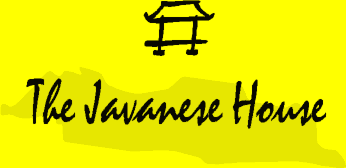

 |
This Archaeology on the Net Web Ring site is owned by Serge Mees. |
|||||
| Join | Previous | Next | Next 5 Sites | Random Site | List Sites | |
| Chapter 1 | |
| Introduction | |
South and South East Asia |
|
| This is a paper I wrote when I was studying Archaeology. It was
written for the course on South and South East Asia. In this course the main focus is on
the island Java, therefore Java is the main subject of this paper. From the different
possible subjects I have chosen Architecture, in particular: Houses. Because this
still is a very bread topic, I defined it a little deeper. |
|
What is a House? |
|
| A house can best be defined by the function it has. The function of
a house is a place to live and a safehaven for men. It can be a cave or a palace (Camesasca, 1986: 7). Because the house of the gods (the
temple) is copied from the house of (rich) people (Parmentier,
1907: 47), both have the same structure en symbolics. A house can also have a specific
function like a granary, a meeting point or a grave. I will look at all the different
functions. The focus will be on which forms are used and which are not for the different
parts of a house for people. |
|
The Problem |
|
| The material form and structure of the spaces of the house cannot be separated from its symbolic structure. (Ronald, 1992: 297) The ideas that are alive in a culture lead to architectural forms that distribute these ideas. In the passing of time, a system of symbols has been developed within the Javanese culture, that is a reflection of the development of that culture itself. | |
| Analyzed will be if the representations on the Javanese
temple-reliefs can give an indication on the type of house that was in use during the time
these temples were build. The focus of the analysis will be on if the ideas in the present
traditional housing were also present in the Hindu-Javanese culture (400-1500 AD (Klokke, 1988: 41) on Java. |
|
The way to a Solution |
|
| First traditional houses on Java and its surrounding are looked at. Both physical form of the dwelling and the cultural values and symbolics are discussed here. Next some already analyzed en published pictures of houses on temple-reliefs are examined.There will be examined if the function of the represented constructions could be identified. Use is made of iconic representations of houses and not of excavated remains because in South East Asia there are found very few remains of houses. | |
Back to Serge's Homepage || Next
Chapter
- © 1994, Serge Mees -
![]()